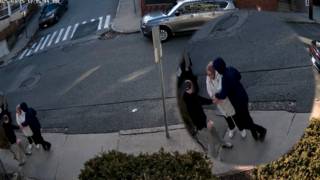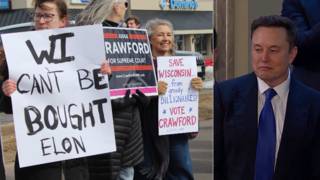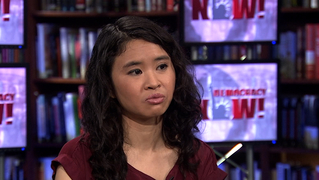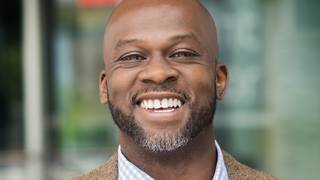
Topics
Guests
- Yvonne Ngsenior archivist for WITNESS, which trains and supports people using video in their fight for human rights. She co-authored “Activists’ Guide to Archiving Video,” which is available in English and Spanish and Arabic.
Cases like Rodney King, Oscar Grant, Eric Garner and Michael Brown have helped fuel demands for police accountability. We are joined by a guest who has advice for the growing number of people filming police abuse with their smartphones and video cameras, particularly with respect to how to properly preserve such video. Yvonne Ng is senior archivist for WITNESS, a group that trains and supports people using video in their fight for human rights. She co-authored their resource, “Activists’ Guide to Archiving Video.” Watch part two of this interview.
Transcript
JUAN GONZÁLEZ: We end today’s show with a guest who has advice for the growing number of people filming police abuse with their smartphones and video cameras. Over the years, such footage has helped fuel demands for police accountability in the United States. In 1991, Rodney King became a worldwide symbol of police abuse and racial conflict after homemade video emerged of Los Angeles police officers brutally beating him. Eighteen years later, cellphone footage caught the death of Oscar Grant, who was shot to death on a subway platform in Oakland by a transit police officer.
AMY GOODMAN: Earlier this summer, a resident of Staten Island, New York, filmed the death of Eric Garner, an African-American father of six who died July 17th after police placed him in a chokehold when he was accused of selling loose cigarettes. Garner can be heard repeatedly saying, “I can’t breathe,” and eventually stops moving.
POLICE OFFICER 1: Put your hand behind your head!
ERIC GARNER: I can’t breathe! I can’t breathe! I can’t breathe! I can’t breathe! I can’t breathe! I can’t breathe! I can’t breathe! I can’t breathe!
RAMSEY ORTA: Once again, police beating up on people.
POLICE OFFICER 2: Back up. Back up and get on those steps.
RAMSEY ORTA: OK.
JUAN GONZÁLEZ: Eric Garner’s death has since been ruled a homicide, and a grand jury is investigating. The original police report made no mention of the chokehold.
And most recently, video has emerged of unarmed teen Michael Brown, left dead in the street for hours after he was killed by police officer Darren Wilson, contributed to the protests that lasted nearly two weeks. Demonstrators then filmed the militarized police force that greeted them, prompting further outrage. At one point, video of an officer pointing his semi-automatic assault rifle at peaceful protesters and threatening to kill them led to his indefinite suspension.
AMY GOODMAN: To talk about how to properly preserve such video, we’re joined by Yvonne Ng. She is the senior archivist for WITNESS, a group that trains and supports people in using video in their fight for human rights. She co-authored “Activists’ Guide to Archiving Video,” which is available in English and Spanish and Arabic, after hearing from activists this was a skill set they were largely missing.
Welcome to Democracy Now! It’s so great to have you with us, Yvonne. Explain what you do. So you’re there with your cellphone, and you’re filming something. What do you do with it after that?
YVONNE NG: Well, I mean, that’s a very important point. We provide resources on how to film, like how to film during a protest, but it’s just as important to think about what you’re going to do after you film, so that what you’ve done can make the most difference it can. So, that’s really where the archiving comes in. The point of archiving is to help ensure that your video is preserved, intact and is ready to be used when you need it.
So, there are a number of things that activists can do. And as you know, archiving can—when you get really into it, can get quite complex, but there’s a lot of very basic practices that anyone can do to ensure that their video survives intact and can be used. And we know that this is possible because we’ve worked with activists in Syria, who are facing enormous challenges—daily bombardment, insecurity, a lack of access to basic resources—and they have been able to successfully implement some of these practices.
AMY GOODMAN: Explain what you’re trying to preserve. You’re trying to preserve not just the video image, but explain what else, like the metadata.
YVONNE NG: Mm-hmm. Well, videos can be used to not only raise awareness of what’s going on, but they can be used in legal contexts, to exonerate somebody who’s been falsely accused or to hold somebody accountable for actions. But in order for that to happen, you know, your video needs—people need to understand what’s going on in your video, people need to know that what is in it happened when you say it happened, where you said it happened. So, it’s important to hold onto copies of your original video. So we know that a lot of activists upload videos to YouTube, and then they often delete their copies of the video because they need the storage space. So, it’s understandable. But YouTube, as you know, takes videos down all the time for various reasons. So if you don’t have a copy, it’s lost. And you also want to hold onto your videos in their original format, because, like you said, there is metadata that’s embedded in those video files by the camera that shows when and sometimes where the video was shot. And that is important for demonstrating the authenticity of your video.
AMY GOODMAN: So where do you download it to?
YVONNE NG: Well, the easiest thing to do is, when you have your memory card or your phone, plug it into your computer and copy the files directly onto your computer without using any sort of processing or specialized software. It’s that simple to keep the original file. And then, once you’ve copied it onto your camera, you want to—off your camera, you want to make sure you have two copies on two separate storage devices, because, as you know, hard drives fail all the time. They’re not meant to last. So having two copies ensures that if one drive fails, you have another. The third thing you want to do is to document your video with basic information, like I said, like where, when, who shot the video and basically what’s going on, because raw footage is not always evident.
JUAN GONZÁLEZ: And what kind of support does WITNESS provide to people out in the general public who are doing this taping?
YVONNE NG: Yeah, so, we have created resources on how to film—how to film a protest, how to use a mobile phone, and our “Archivists’ Guide to Archiving Video.” So we’ve distributed this to activists all around the world, including activists in Ferguson. Some of our resources have been downloaded thousands of times since we’ve shared that since that incident.
JUAN GONZÁLEZ: We’ve got about 10 seconds.
AMY GOODMAN: Well, I want to thank you very much for being with us. Yvonne Ng is the senior [archivist] for WITNESS, which trains and supports people using video in their fight for human rights, co-author of “Activists’ Guide to Archiving Video,” and we’ll link to it online. I also want to do—we’ll do a post-show with you to talk about what some of the people who have written in about have questions for you.












Media Options